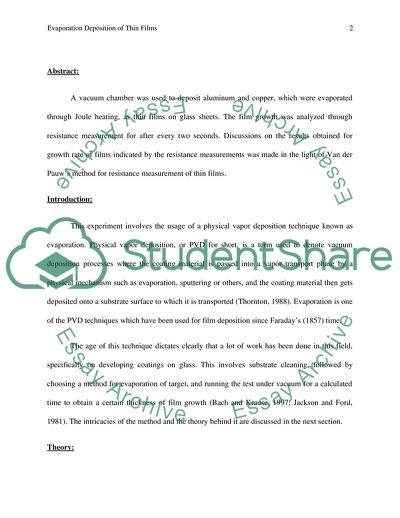Cite this document
(An Analysis of Growth Characteristics of Aluminum and Copper Films Lab Report - 2, n.d.)
An Analysis of Growth Characteristics of Aluminum and Copper Films Lab Report - 2. https://studentshare.org/science/1751239-thin-film-lab
An Analysis of Growth Characteristics of Aluminum and Copper Films Lab Report - 2. https://studentshare.org/science/1751239-thin-film-lab
(An Analysis of Growth Characteristics of Aluminum and Copper Films Lab Report - 2)
An Analysis of Growth Characteristics of Aluminum and Copper Films Lab Report - 2. https://studentshare.org/science/1751239-thin-film-lab.
An Analysis of Growth Characteristics of Aluminum and Copper Films Lab Report - 2. https://studentshare.org/science/1751239-thin-film-lab.
“An Analysis of Growth Characteristics of Aluminum and Copper Films Lab Report - 2”. https://studentshare.org/science/1751239-thin-film-lab.


